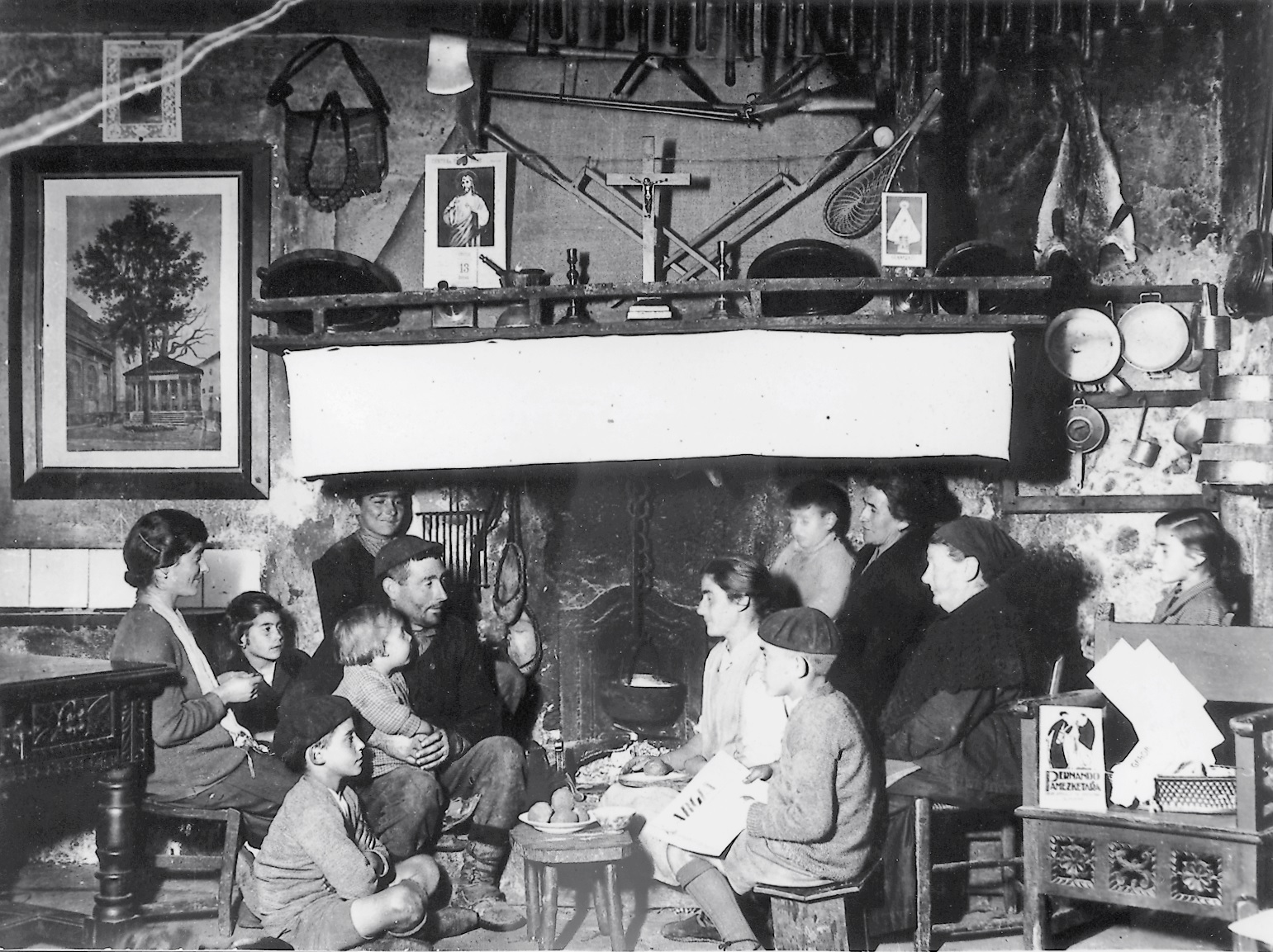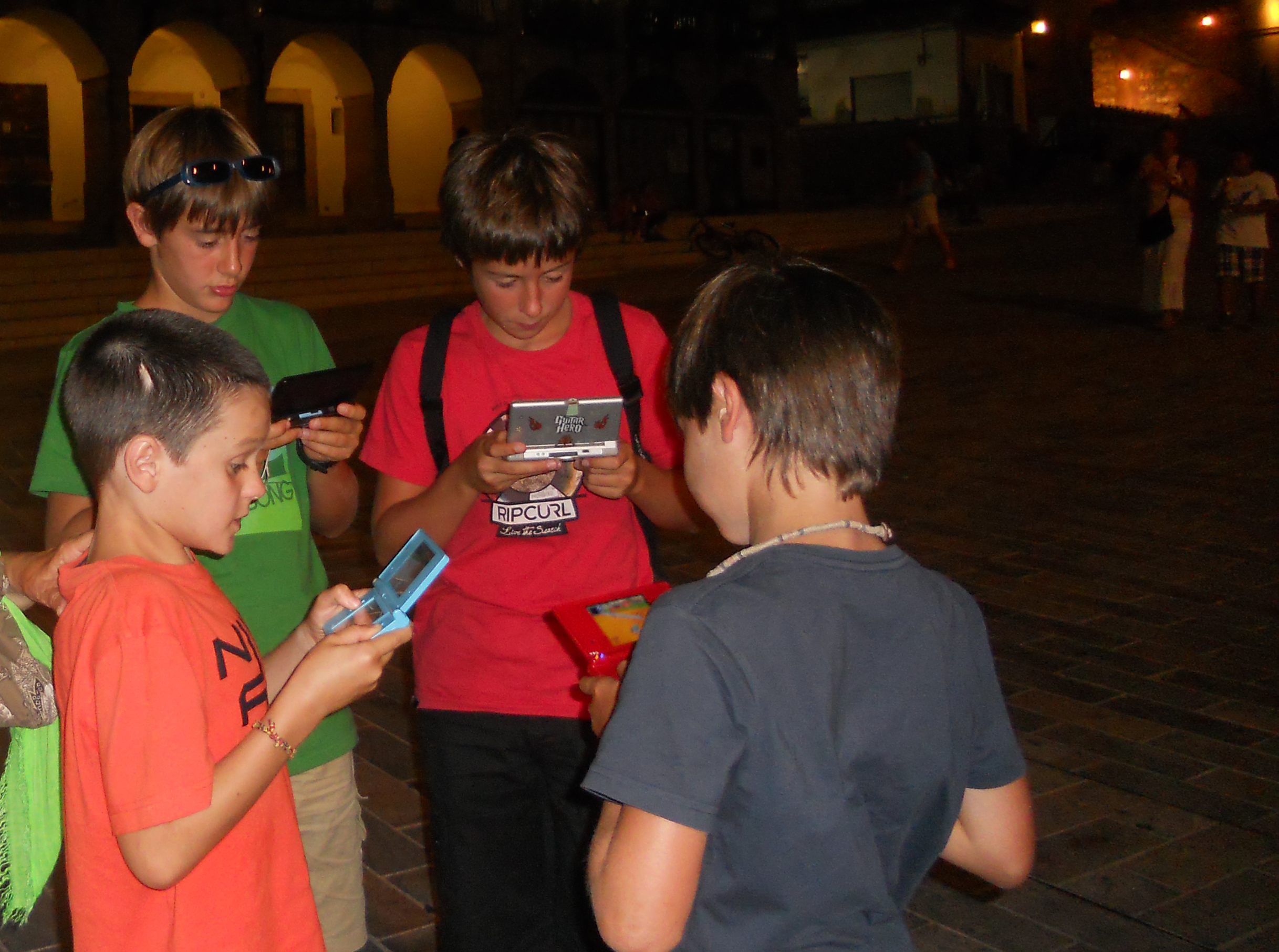Basque ethnography at a glance

Picture from Aguirre Photographic Archive included in House and Family in the Basque Country.
When we talk about ethnography and oral transmission, it is almost inevitable to visualise an old-time family gathered around a fireplace and grandparents relating stories or folktales to an attentive child audience.
Time goes by, and the precious fire is stored within a heavy cast iron frame called kitchen stove, or simply stove, but the transmission process remains unchanged. Rural culture is gradually replaced by a predominantly urban society, the fireplace rapidly recedes in importance within the house, and the living room takes hold as a space in its own right. There we find our family, reduced in members now and totally absorbed by moving pictures, as fascinating as the fireplace flames of olden times, coming from a television set, the new storyteller.
Years later the concept of the television as the fire substitute loses its momentum, and the habit of watching it together is abandoned. Some members of the family lock themselves in their rooms to watch their own television. More years fall away, and computer monitors displace television screens. Indeed, the prospect of choosing the story one wants to hear enhances their power to captivate our attention.

Bilbao, 2013. Izaskun Agirre.
And there is no stop to it. Should you walk the streets of our towns or travel on any form of public transport, you will see people holding their own ‘surrogate fire’ in the form of mobile devices. They remain engrossed in watching captivating images while listening or reading fresh news broadcast throughout a worldwide web. The fables related by our ancestors seem ancient history.
Ethnographers have kept on listening to old stories and registering them all the while. In the past field notes would be jotted down on pocket memo pads, later interviews would be taped using tape or cassette decks, and more recently recorded with photographic, film or video cameras. Acting as an intermediary between the storyteller and those wishing to listen to their story, the ethnographer’s final aim is to spread the word. Books and audiovisual material serve this end; however, such a virtual means of transmission, fragile and ethereal but extremely powerful at the same time, so is too the nature of the stories told, opens up new horizons. All to the good.
Luis Manuel Peña – Ethnography Department – Labayru Fundazioa
Translated by Jaione Bilbao – Language Department – Labayru Fundazioa

